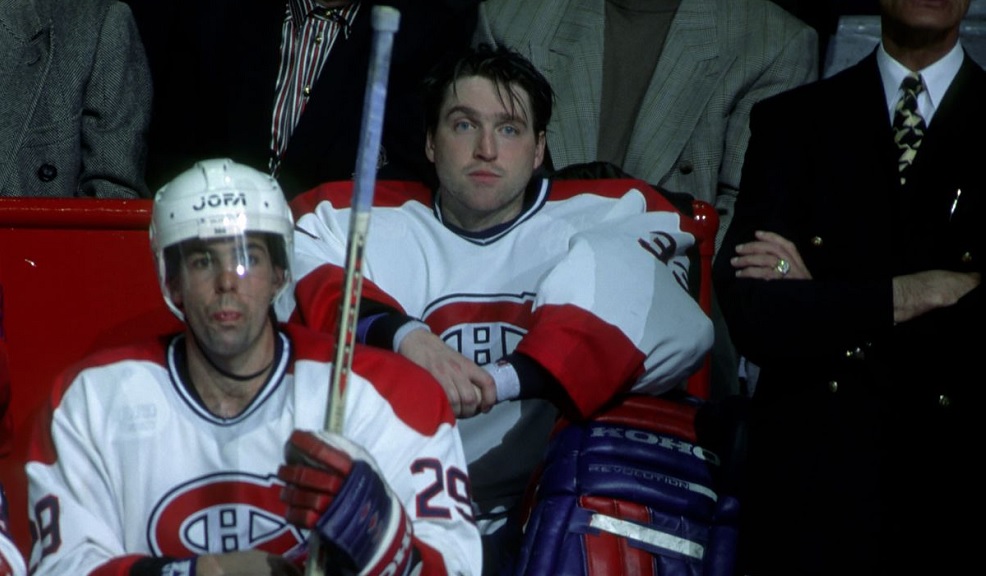During my first encounter with the area around the Molson Centre, the late ’90s Montreal Canadiens were a far cry from their iconic stature. This wasn’t the era of Youppi’s youth stars or polarizing figures like Kovalev, Subban, or Koivu. The Canadiens, only half a decade removed from their 24th Stanley Cup win, were in a state hard to articulate, a mere shadow of their former glory.
Montreal itself was in the throes of transformation, grappling with its identity amidst political uncertainty and the dawning of the dot-com era. From the Metros to Ste Catherine Streets, the city buzzed with an amateurish charm, resisting the engulfment of global franchises. Local icons like Buffalo Jeans, Parasuco, and Club Super Sexe were the emblems of this era, a time when Montreal felt more like a mosaic of small towns, each with its own distinct identity, connected by a network of bus lines and metro stations.
In this milieu, on the unassuming stretch of Ste Antoine, I stumbled upon my uncle Armand’s car wash, a downtown hub where cop cars shone and where I’d park cars in the evenings, indifferent to extreme weather. Amidst the suds and water, I glimpsed a Canadiens player for the first time. A dishevelled man, freshly arrived from Chicago, he was just another transient figure in a city full of them.
Montreal, during those days, was steeped in sports intrigue. The uncertain future of the Canadiens and the Expos left fans in limbo. It was akin to watching a divorced parent navigate new relationships: a mix of hesitant attachment and cautious hope.
The Molson Centre, ironically, became a symbol of Montreal’s departure from its intimate past. Representing a shift towards a corporate, interactive digital era, it stood in stark contrast to the warm tradition of the Forum it replaced, feeling more like a cold, oversized refrigerator. Some argue it still is to this day, albeit a loud one.
Among the items left in a limousine’s trunk at the car wash was a bag with the name “Hackett.” He was just one in a series of goalies, like Halak, Huet, Aebischer, and Thibault, who each briefly sparked hope before fading into the background, victims of injuries or scandals. The media narrative fluctuated between hopeful anticipation and harsh criticism, mirroring the lacklustre on-ice product of that era.
The Canadiens’ woes extended beyond the ice to the executive offices. From the end of Serge Savard’s tenure to Marc Bergevin’s era, the team struggled with poor team building and asset management, overly reliant on its goalkeeping legacy.
Have I said Carey Price yet? Oh yes, and then Carey Price happened.
But for a time, before all this, there was Patrick Roy. His dramatic exit from the Canadiens, after a disastrous game against Detroit mishandled by coach Mario Tremblay and a fallout with president Ronald Corey, marked a turning point. Roy, now celebrated for his coaching prowess and high standards in the QMJHL, clashed with the emerging culture of corporate mediocrity in the team. His departure symbolized a shift away from the excellence that once defined the Canadiens – a standard of greatness not aligned with branding but with unyielding expectations.
So where does that leave us?
The so-called “Roy Curse” reflects a broader cultural shift in Montreal. The city and its beloved team have evolved, but not necessarily for the better. The Alouettes’ recent but hard-sought success under Danny Maciocia suggests that the spirit of Montreal’s sports glory is dormant, not dead. It’s a spirit that could, one day, be rekindled in the Canadiens, but only if the fans demand it. In the spirit of Roy’s relentless pursuit of excellence, perhaps the Canadiens can one day reclaim their former glory. But this resurgence hinges on a return to the gritty, unapologetic standards that once defined them.
So? Do you demand it?
